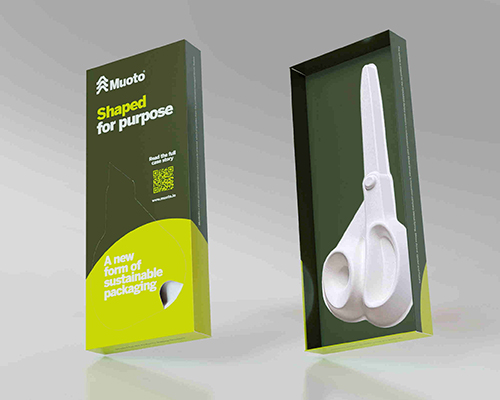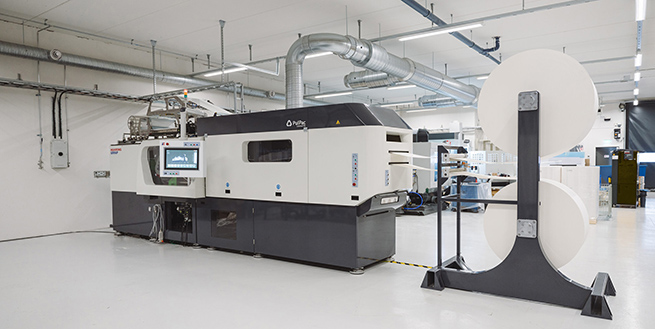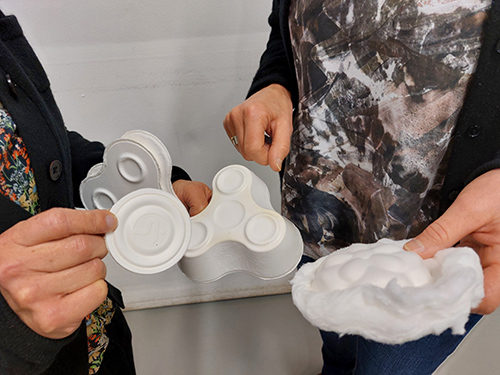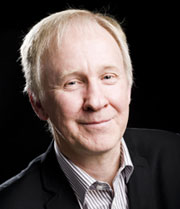Fibre moulding is an area that is developing rapidly, not least because new technologies enable the manufacture of products with properties that can compete with plastic applications.
It was well highlighted at the "International Fiber Moulding and Paper Forming conference" organized by RISE, Research Institutes of Sweden, in Stockholm end of September.
With a wide range of speakers, the conference participants got a good update on what the different technologies offer today, as well as where the development is going. Unfortunately, it is not possible to give a detailed report of the content of all the presentations, I limit myself to a few impressions of the conference content as well as of the exciting development of various moulding techniques that is going on right now.
The first conference day was mainly devoted to wet forming, an old technique that is now attracting increasing interest from researchers, technology developers, machine builders, chemical suppliers and brand owners. So far, the technology has mostly been used for large-volume production of egg cartons, product protection in packaging and simple trays. Now, however, there is a rapid development towards wet-formed and hard-pressed articles such as packaging, cups, mugs, lids and more, articles that can replace corresponding articles made of plastic.
A big difference between the new generation wet moulding and the "traditional" one is that very high press pressures are used as well as additives in the material to give the final product suitable barrier properties. For a long time there was not much research and development of wet forming methods, but in recent years the field has exploded with a large number of patents and patent applications. An example is Valmet, which with its background in paper, board and pulp production in wet environment, together with Metsä Spring built a demonstration plant in Äänekoski for wet-formed 3D products. This has been in operation since May 2022.
 Valmet and Metsä Spring has built a demonstration plant in Äänekoski for wet-formed 3D products. One example is the inner packaging for Fiskars’ ReNew scissors. Photo: Mestä Spring.
Valmet and Metsä Spring has built a demonstration plant in Äänekoski for wet-formed 3D products. One example is the inner packaging for Fiskars’ ReNew scissors. Photo: Mestä Spring.
For historical reasons, wet forming technology has come further than dry forming as more products are made in large runs. At the same time, a completely new era has begun in which dry forming, with the possibility of high production speed, is moving forward, taking volumes and making technological advances. As the name says, it is a completely dry process where the pulp is defibrated without water, forming a "fluff web" that is shaped into the intended products under high temperatures and pressure.
Three Swedish players in dry fibre moulding, Blue Ocean Closures, PulPac and Yangi, have all developed their own patented processes. Interestingly, the three have different business models to reach the market: as licensors, machine manufacturers or as producers of the products. Blue Ocean Closures is concentrated on the manufacture of screw caps and has, among other things, recently concluded a partnership with Coca-Cola's EMEA R&D Center in Brussels. PulPac and Yangi have both developed dry processes and equipment for dry fibre moulding of other products. All three companies are experiencing rapid growth and have formed partnerships with many stakeholders, not least with brand owners. Development is going fast in the area and a lot is happening and will happen in the next few years. Like Valmet's entry into the fibre moulding area, Voith has also become involved and is a partner of Yangi.
 PulPac Scala is a plug-and-plug machine for dry fibre moulding. Photo: PulPac.
PulPac Scala is a plug-and-plug machine for dry fibre moulding. Photo: PulPac.
In order for dry and wet fibre moulding products to be able to replace plastic with its good barrier properties, much of the conference was about how to achieve the corresponding properties. Several speakers emphasized that it is important that the new products, regardless of moulding method, must have sufficiently good barrier properties to be able to replace corresponding products made of plastic. The requirements for a disposable cup for coffee, which is thrown away or recycled after use, are significantly lower than for products containing fat or chemicals or intended to be used several times and thus withstand washing.
High pressures increase barrier properties, but additives are usually required in the pulp stock or in the dry fibre mixture. For more demanding applications, surface treatment in the form of spray or lamination are ways to go to provide the right barrier properties against grease and oxygen. Since many applications involve contact with food or drink, the barriers must be approved for food contact. In addition, the barrier material must not prohibit recycling.
 Samples of articles produced by the Yangi dry fibre moulding machine.
Samples of articles produced by the Yangi dry fibre moulding machine.
When it comes to barriers, it's a lot about knowing how the chemistry, and which chemistry, should be used in the best way as well as how good the barrier needs to be and in which segment the product is to be used. That prerequisite and basic knowledge gives an opportunity to develop and find new solutions. Having a good knowledge and understanding of the barrier and the fibre, as well as how they work together and what can be done to achieve the intended effect, is paramount.
To sum up, the fibre moulding area is bubbling with development and anticipation of what may come. Several start-ups are running and growing, established manufacturers from neighbouring areas are entering and, not least, large international brand owners are active and contributing to the traction and growth of fibre moulded products of many kinds.
Presentations were held at the conference by: AIM Sweden, AISA Automation Industrielle, Archroma, BIM Kemi, Blue Ocean Closures, Centre Technique du Papier, Fiber Thermoforming Technologies, Kemira, Kiefel, KTH, L’Oréal, McKinsey, OrganoClick, PulPac, RISE, RISE PFI, Swedish Red Cross, Sandvik Rock Tools, Stora Enso and Yangi.
 Sören Back has been working in the Swedish pulp and paper industry since 1976. With an M.Sc. in chemistry with focus on in pulp and paper technology the career spans from production control, product development, sales and marketing to communications, including PR, primarily in managerial positions. Over the years Sören has worked for MoDo Paper, M-real, now Metsä Board, and SP Processum but is now running his own business, SB Kommunikation AB, as freelance writer and communications consultant with customers mainly within the pulp and paper industry.
Sören Back has been working in the Swedish pulp and paper industry since 1976. With an M.Sc. in chemistry with focus on in pulp and paper technology the career spans from production control, product development, sales and marketing to communications, including PR, primarily in managerial positions. Over the years Sören has worked for MoDo Paper, M-real, now Metsä Board, and SP Processum but is now running his own business, SB Kommunikation AB, as freelance writer and communications consultant with customers mainly within the pulp and paper industry.













